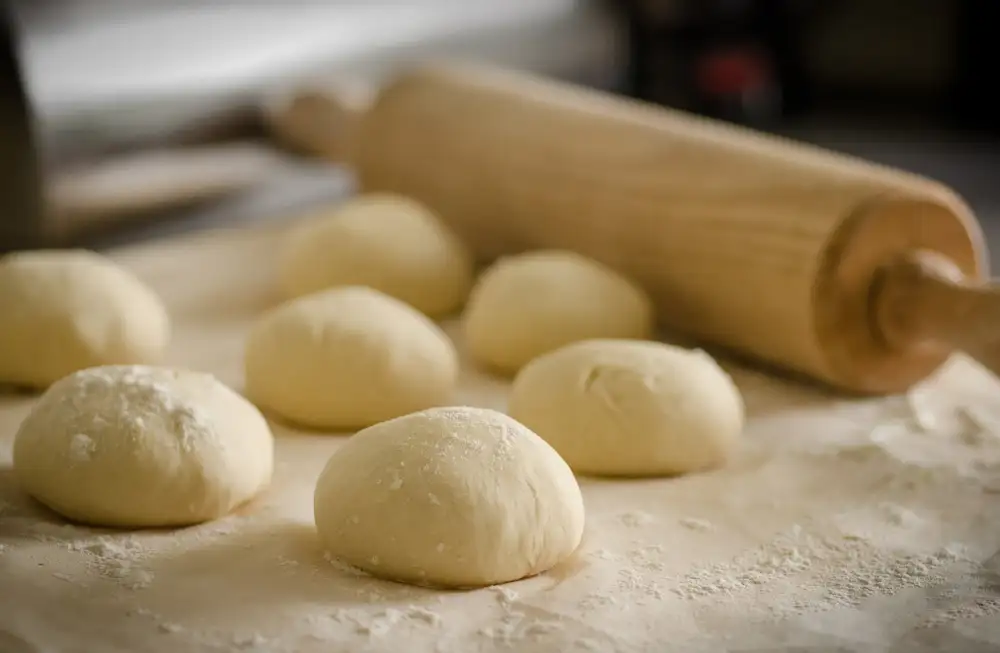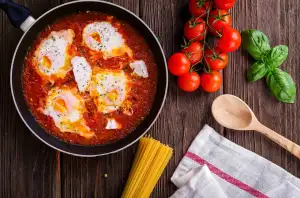Bread Flour: The Secret Ingredient for Perfectly Fluffy Homemade Bread Recipes

Bread is a staple in many cultures, and there's nothing quite like the aroma of freshly baked bread filling your home. If you've ever tried making homemade bread, you may have noticed that achieving that perfect texture and fluffy consistency can be a challenge. That's where bread flour comes in. It's the secret ingredient that can take your homemade bread recipes to the next level. In this article, we'll explore what bread flour is, its characteristics and properties, as well as the benefits of using it in your bread baking endeavors. So let's dive in and discover how this special type of flour can elevate your cooking skills!
What is bread flour?
Bread flour is a type of flour specifically designed for making bread. It is made from hard wheat varieties that have a high protein content, typically around 12-14%. This high protein content gives bread flour its unique characteristics and makes it ideal for bread baking. The proteins in bread flour, glutenin and gliadin, combine to form gluten when mixed with water. Gluten provides structure and elasticity to the dough, allowing it to rise and create a light and fluffy texture in the finished bread. Bread flour also has a higher absorption rate than other flours, meaning it can absorb more liquid during the mixing process without becoming too sticky or wet. This helps to develop a stronger dough that can hold its shape during baking. Overall, bread flour is essential for achieving the perfect texture and structure in homemade bread recipes.
Characteristics and properties of bread flour
Bread flour is a type of flour that is specifically designed for making bread. It has unique characteristics and properties that set it apart from other types of flour. One of the key features of bread flour is its high protein content, typically around 12-14%. This high protein content gives bread flour its ability to develop gluten, which is essential for creating the structure and texture in bread.
The gluten formed by the proteins in bread flour gives the dough elasticity and strength, allowing it to rise properly during the fermentation process. This results in a light and fluffy texture in the finished bread. The strong gluten network also helps to trap carbon dioxide gas produced by yeast, leading to a better rise and increased volume.
Another important property of bread flour is its ability to absorb more water compared to other flours. The higher protein content allows bread flour to hold onto more moisture, resulting in a softer and moister crumb in the final baked bread.
In addition to its protein content, bread flour also contains a higher amount of gluten-forming proteins called gliadins and glutenins. These proteins contribute to the overall quality of the gluten network, enhancing the chewiness and structure of the bread.
It's worth noting that due to its high protein content, bread flour can be denser than other flours when used in recipes that don't require as much gluten development. However, when used correctly in bread recipes, it produces superior results with excellent texture and flavor.
Overall, the characteristics and properties of bread flour make it an essential ingredient for achieving perfectly fluffy homemade bread. Its high protein content, ability to develop gluten, water absorption capacity, and quality of gliadins and glutenins all work together to elevate your baking skills and create delicious artisanal loaves.
Benefits of using bread flour in bread recipes
Using bread flour in bread recipes offers several benefits that can elevate your baking skills.
Firstly, bread flour has a higher protein content compared to all-purpose flour. This high protein content, usually around 12-14%, creates gluten strands that give bread its structure and elasticity. The gluten network formed by the protein in bread flour traps carbon dioxide produced during fermentation, resulting in a lighter and fluffier texture.
Secondly, the higher protein content in bread flour also contributes to better water absorption. This means that dough made with bread flour can hold more moisture, resulting in a moist and tender crumb.
Additionally, the strong gluten formation in bread flour allows for better oven spring during baking. This means that your loaf will rise more evenly and have a better volume.
Lastly, using bread flour enhances the flavor of your homemade bread. The increased protein content adds depth and complexity to the taste, giving your loaves a rich and satisfying flavor profile.
In summary, incorporating bread flour into your bread recipes improves texture, moisture retention, oven spring, and overall flavor. These benefits make it an essential ingredient for achieving perfectly fluffy homemade bread.
How to substitute bread flour in recipes
When it comes to bread baking, using the right type of flour is crucial for achieving the perfect texture and flavor. However, if you find yourself without bread flour in your pantry, there are a few substitutes that can work in a pinch. One option is to use all-purpose flour mixed with vital wheat gluten. Simply combine 1 cup of all-purpose flour with 1 teaspoon of vital wheat gluten for every cup of bread flour called for in the recipe. Another substitute is to use whole wheat flour, although be aware that this will result in a denser loaf. You can also try using a combination of all-purpose flour and cake flour, using equal parts of each. While these substitutes may not yield the exact same results as using bread flour, they can still produce delicious homemade breads with slightly different characteristics. Experimenting with different substitutions can be a fun way to explore new flavors and textures in your bread baking adventures.
Tips for using bread flour in bread baking
1. Measure accurately: When using bread flour, it is crucial to measure it accurately. Use a kitchen scale to weigh the flour instead of relying on volume measurements, as this ensures consistency and better results.
2. Knead thoroughly: Bread flour has a higher protein content, which means it requires more kneading to develop gluten. Knead the dough until it becomes elastic and smooth, ensuring proper gluten formation for a lighter texture.
3. Adjust hydration: Bread flour absorbs more liquid than all-purpose flour. As a result, you may need to adjust the amount of liquid in your recipe when using bread flour. Add water gradually until you achieve the desired consistency.
4. Allow for longer rise times: Due to its high protein content, bread made with bread flour often requires longer rising times compared to recipes using all-purpose flour. Be patient and allow the dough enough time to rise fully for optimal flavor and texture.
5. Preheat your oven: Before baking with bread flour, ensure that your oven is preheated to the correct temperature specified in the recipe. This helps create an ideal environment for proper yeast activation and even baking.
6. Use steam during baking: To achieve a crispy crust on your homemade bread, consider adding steam during the initial stages of baking. This can be done by placing a pan of hot water in the oven or spraying water onto the sides of the oven walls.
By following these tips, you can maximize the potential of bread flour in your homemade bread recipes and achieve perfectly fluffy loaves every time!
Popular bread recipes that require bread flour
Popular bread recipes that require bread flour include classic French baguettes, rustic Italian ciabatta, and hearty whole wheat loaves. These recipes rely on the high protein content of bread flour to create a strong gluten network, resulting in a chewy texture and well-risen bread. Other favorites like sourdough boules, soft sandwich loaves, and fluffy dinner rolls also benefit from the use of bread flour for their desired structure and crumb. Experiment with these recipes to elevate your bread baking skills and achieve bakery-quality results at home.
In conclusion, bread flour is the secret ingredient that can take your homemade bread recipes to the next level. Its high protein content and gluten strength give bread a light and airy texture, making it perfect for fluffy loaves. The unique characteristics of bread flour, such as its ability to absorb more water and provide better structure, result in a superior end product.
By using bread flour in your recipes, you will experience numerous benefits. Your bread will have improved volume, better rise, and a chewy yet tender crumb. The higher protein content also enhances the flavor and allows for longer shelf life.
If you find yourself without bread flour, don't worry! You can easily substitute it with all-purpose flour by adding vital wheat gluten to mimic the protein content. However, keep in mind that the results may not be as optimal as when using actual bread flour.
To make the most out of your bread flour, follow these tips: measure accurately, knead properly to develop gluten strands, allow sufficient time for proofing and rising, and use a Dutch oven or steam method for a crispy crust.
There are countless popular recipes that require bread flour, such as classic French baguettes, artisan sourdough loaves, and fluffy brioche rolls. With the help of this versatile ingredient, you can achieve bakery-quality results right in your own kitchen.
So why settle for mediocre homemade bread when you can elevate your baking skills with the magic of bread flour? Experiment with different recipes and techniques to unlock endless possibilities in creating perfectly fluffy loaves that will impress family and friends alike. Start incorporating bread flour into your baking routine today and enjoy the satisfaction of mastering the art of homemade bread.
Published: 20. 02. 2024
Category: Recipes



